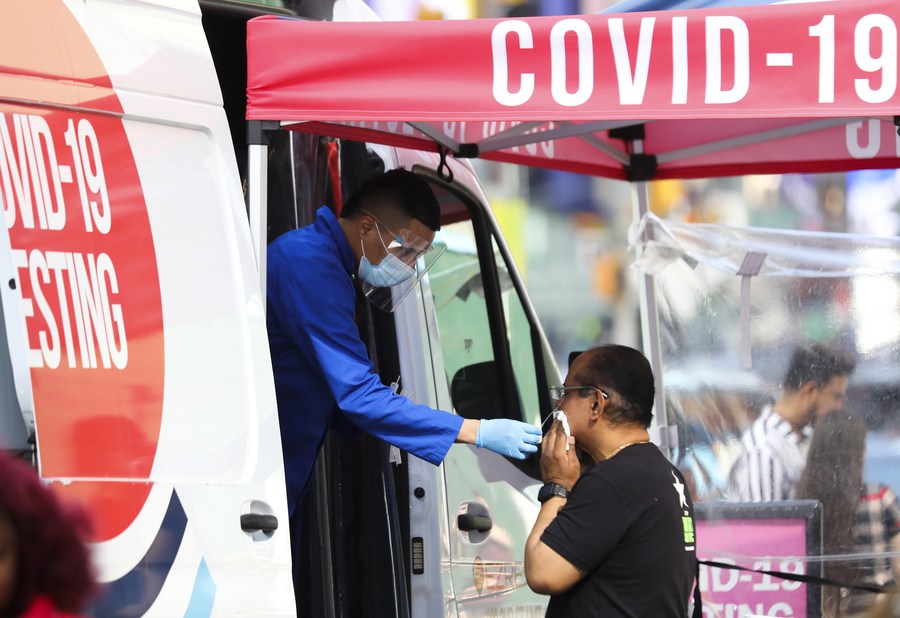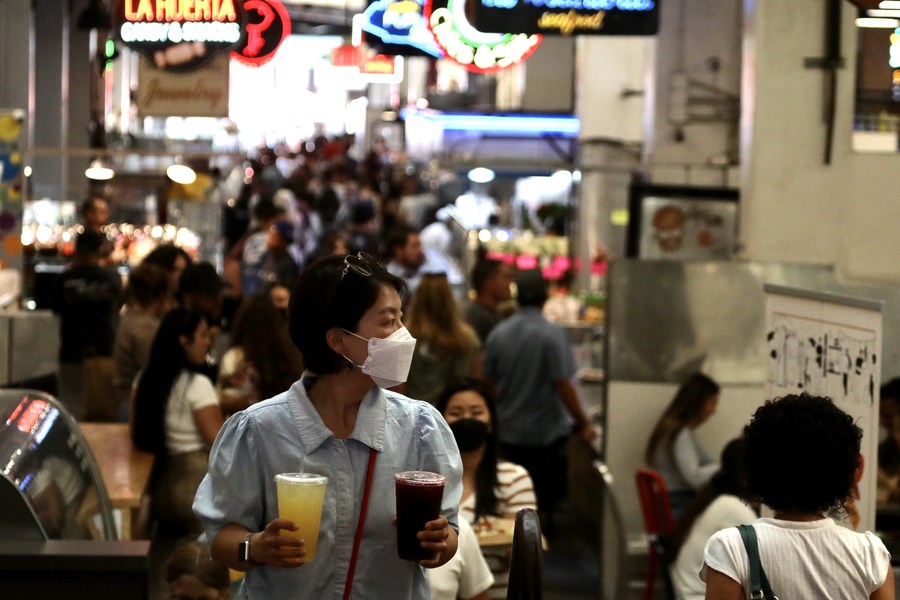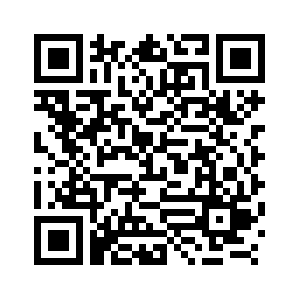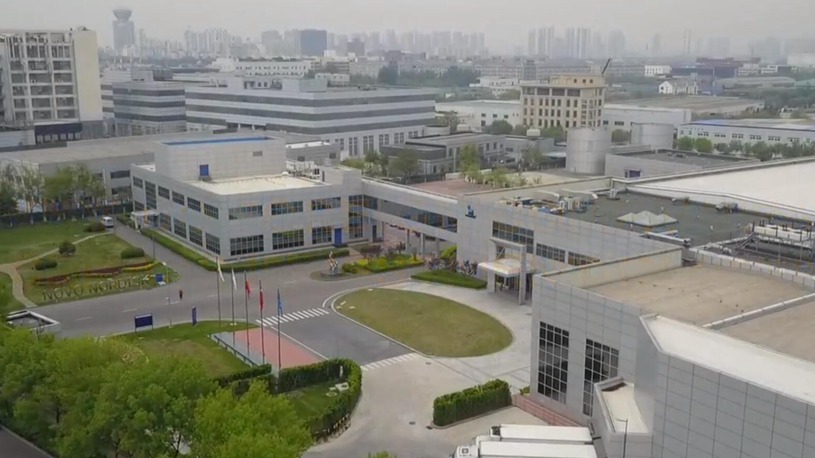
A medical worker collects a swab sample from a man at a COVID-19 testing site on Times Square in New York, the United States, May 17, 2022. (Xinhua/Wang Ying)
New Omicron subvariants are resistant to key antibody treatments for HIV patients, kidney transplant recipients and other immunocompromised people, making them particularly vulnerable to COVID-19 this winter, experts warned.
LOS ANGELES, Oct. 27 (Xinhua) -- Health experts are concerned emerging Omicron subvariants would make some existing protections ineffective for the public, especially the immunocompromised people, amid sluggish uptake of the reformulated COVID-19 shots in the United States.
"With some of the new subvariants that are emerging, some of the main tools we've had to protect the immunocompromised may not work moving forward. And that's a huge challenge," Ashish Jha, head of the White House COVID task force, told reporters on Tuesday.
New Omicron subvariants are resistant to key antibody treatments for HIV patients, kidney transplant recipients and other immunocompromised people, making them particularly vulnerable to COVID-19 this winter, experts warned.
U.S. President Joe Biden cautioned this week the estimated 7 million adults in the United States who have compromised immune systems are particularly at risk.
"If we repeat the mistakes of past winters, we will see more infections, more hospitalizations, more loved ones getting sick, even dying, from the virus," Biden warned.
Experts are concerned new Omicron subvariants such as B.Q.1.1 and XBB could soon render useless treatments such as Evusheld, a therapy used to prevent illness in immunocompromised people.
More than 19 million Americans have received the new COVID-19 boosters that became available to those 12 and over in September and to children as young as 5 earlier this month, according to the latest data of the U.S. Centers for Disease Control and Prevention (CDC).
"That's just a sliver of the population ahead of a potential coronavirus surge this winter," said a report of The Washington Post.

Customers are seen at the Grand Central Market in Los Angeles, California, the United States, July 29, 2022. (Xinhua)
The COVID-19 vaccination rate in the United States lags that of many other high-income countries. Less than half of the total booster-eligible population in the United States has received a COVID-19 booster dose, CDC data show.
About 226.6 million people, or 68.2 percent of the total U.S. population, completed a primary series as of Oct. 20. But only 49.1 percent of the total booster-eligible population received a booster dose, CDC data show.
Some infectious-disease experts are worried COVID-19 cases could increase as people spend more time indoors in the colder weather.
Meanwhile, resurgent flu and other respiratory viruses are crowding hospitals across the country amid persistent workforce shortages.
U.S. pediatric hospital beds are filling up as cases of Respiratory Syncytial Virus (RSV), a common respiratory virus, are spiking nationwide.
"We're in a very challenging phase," said Syra Madad, an epidemiologist who helps oversee pandemic response for NYC Health and Hospitals, the nation's largest municipal health care system.
"Barely anybody is masking. We have very low vaccination rates for the updated boosters, as well as generally waning immunity. And to top it all off, we have these highly immune-evasive subvariants that are circulating," Madad told The Washington Post. ■












